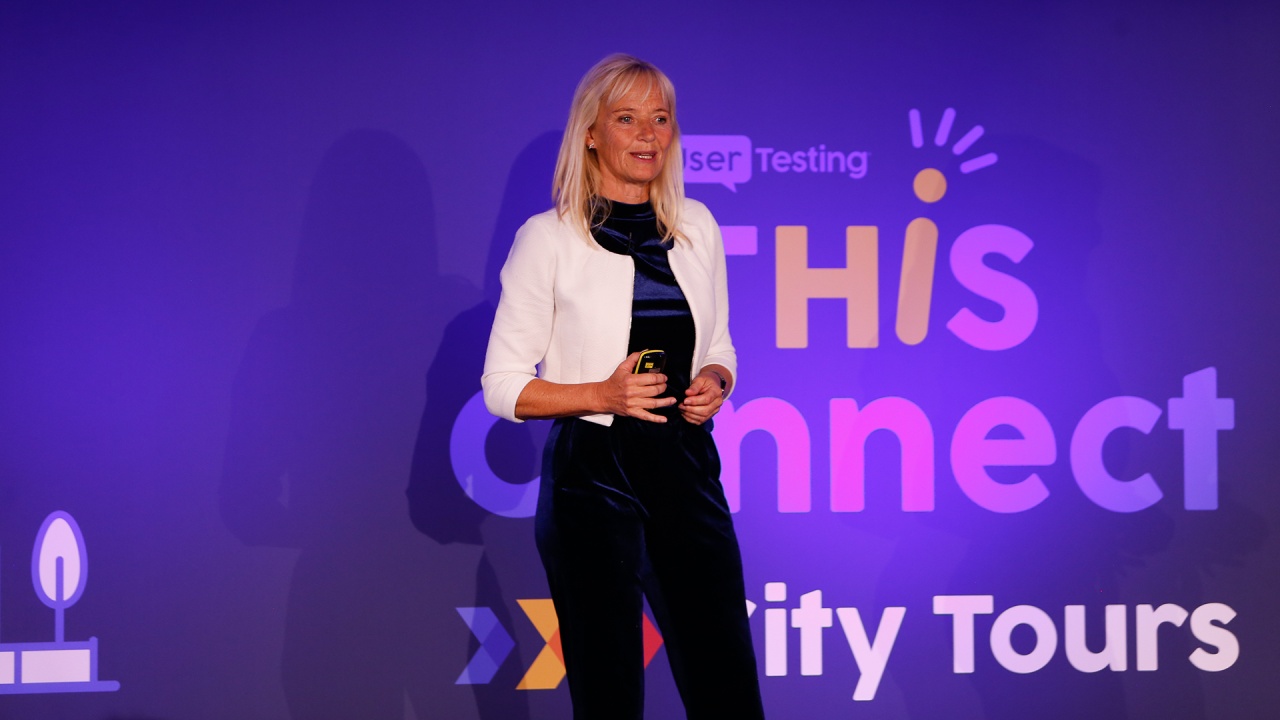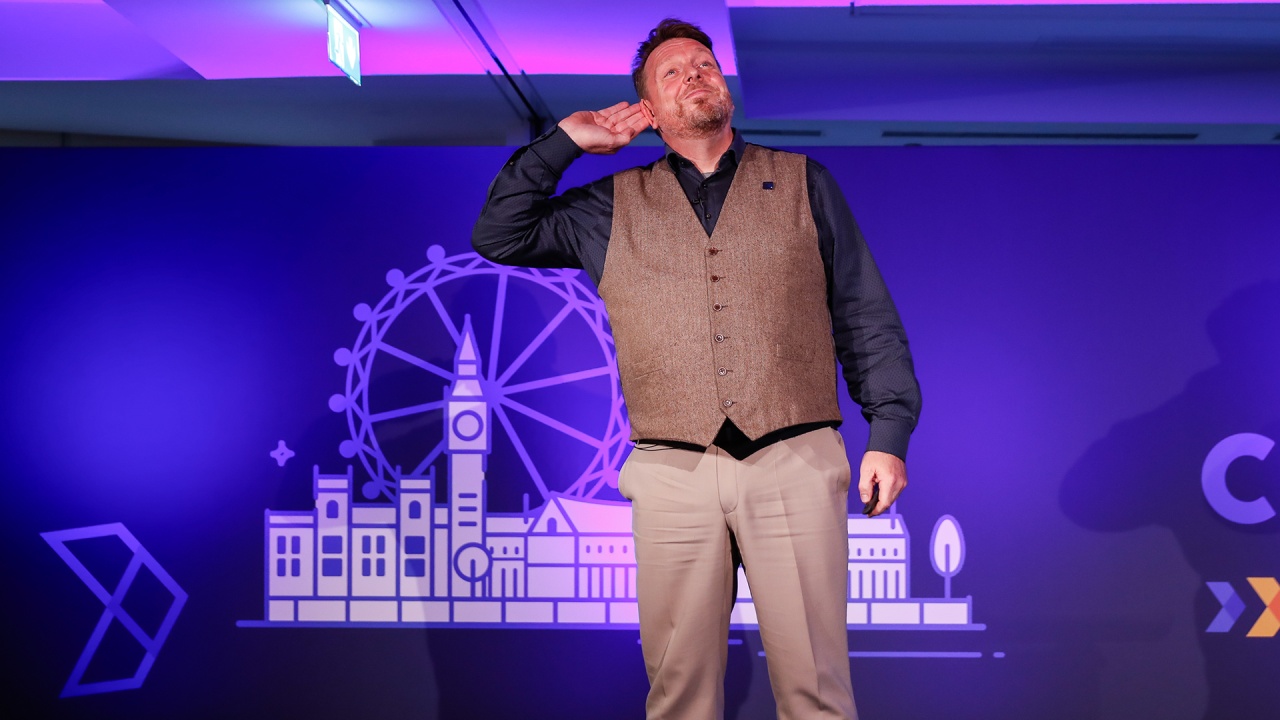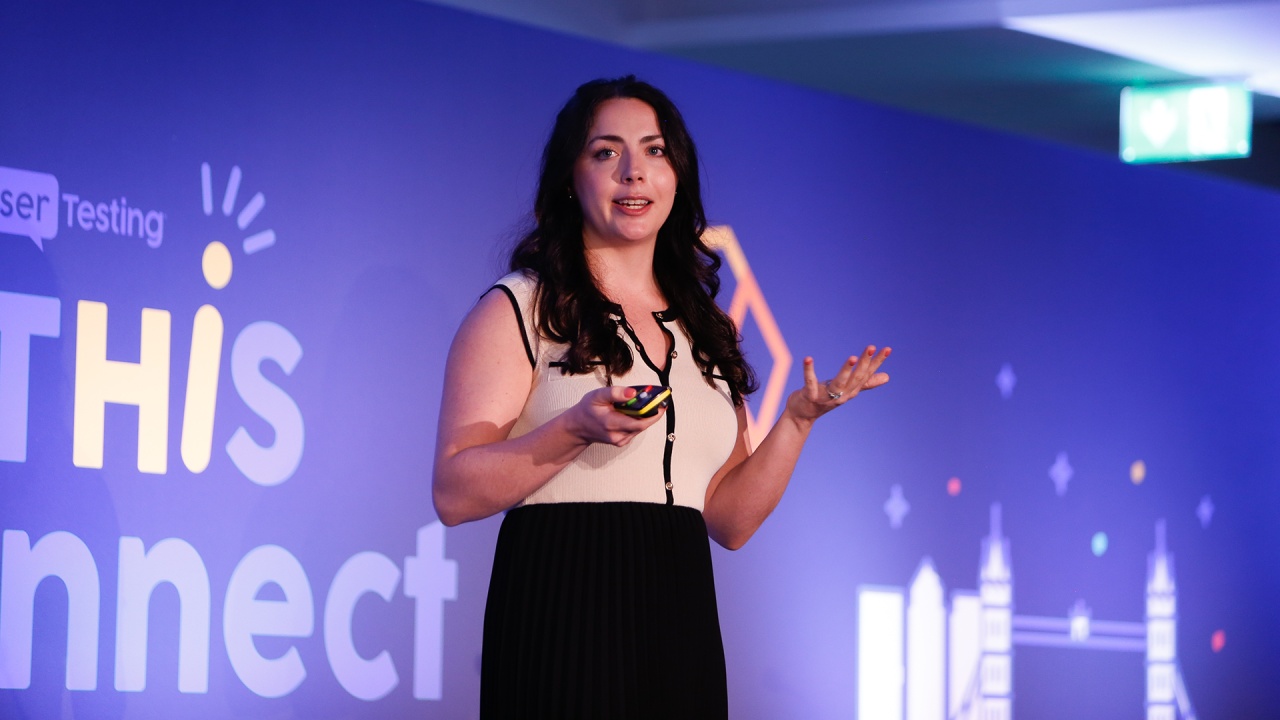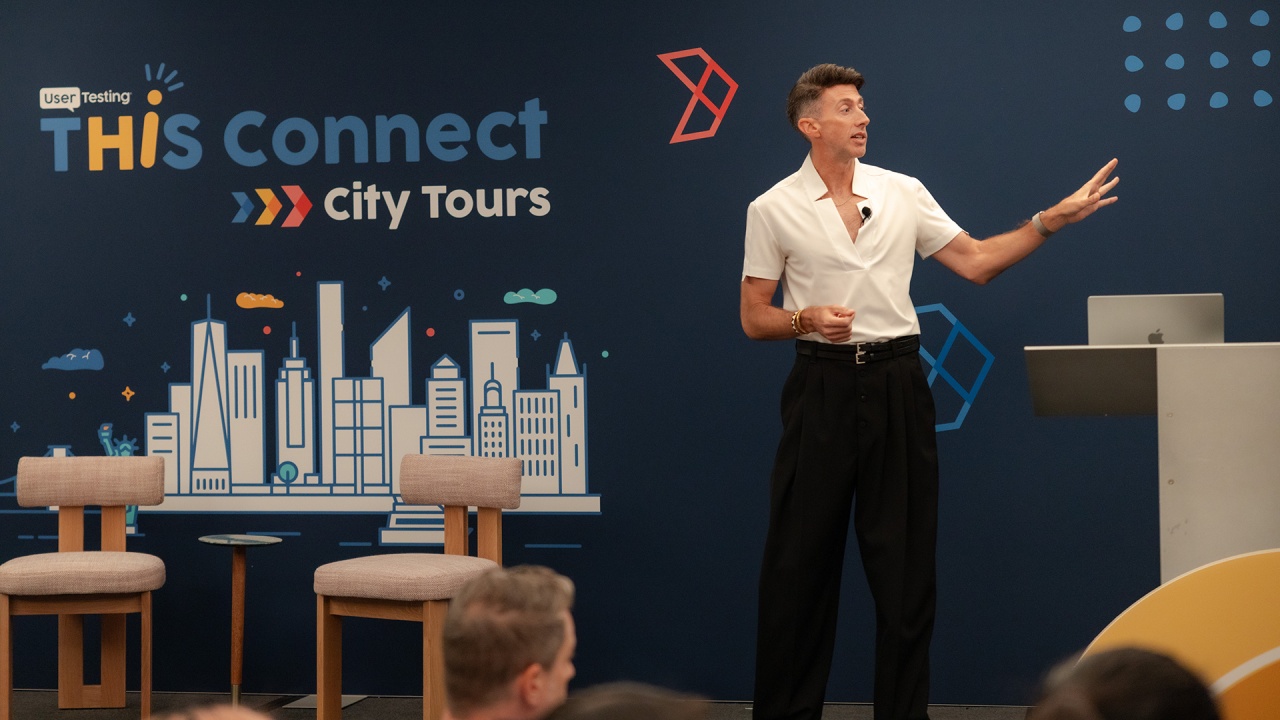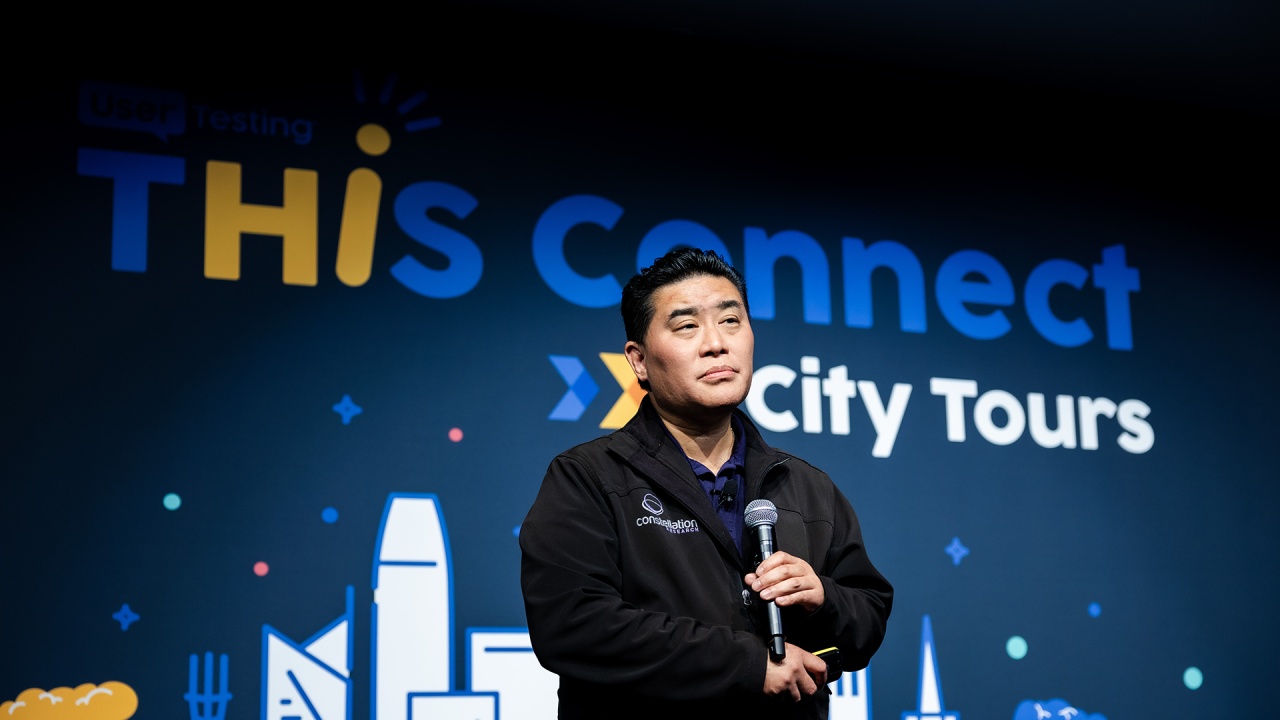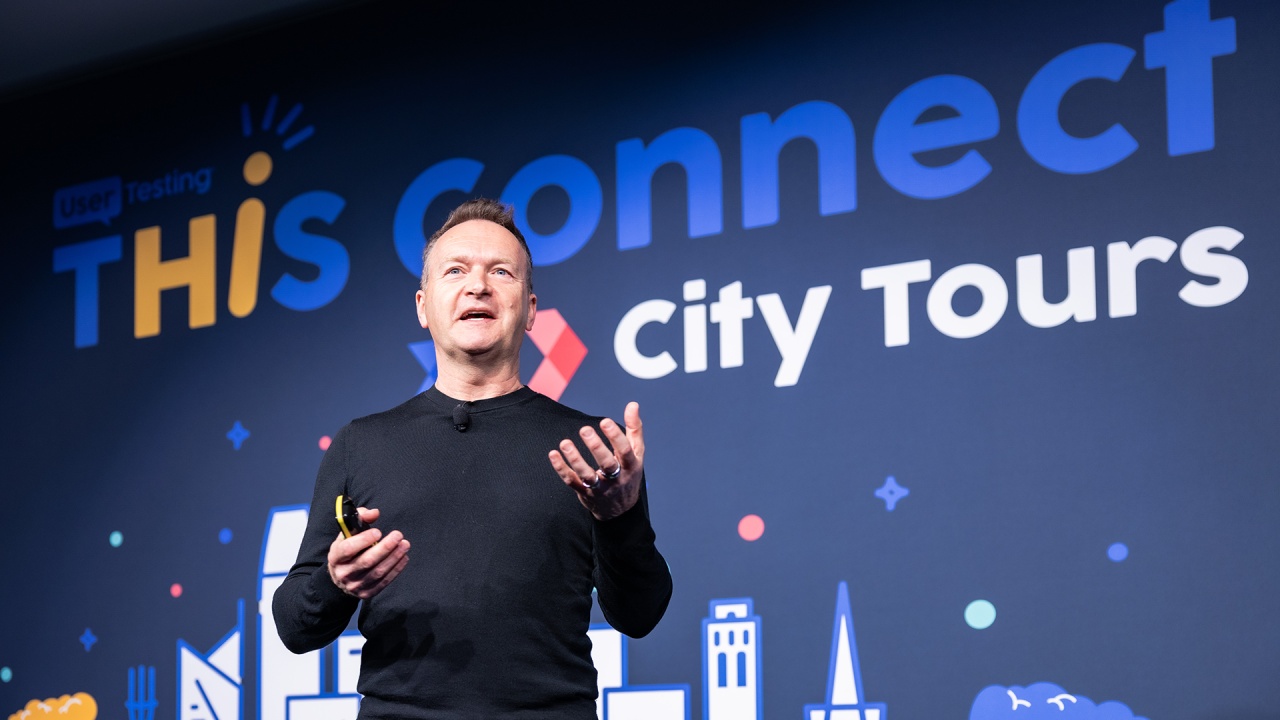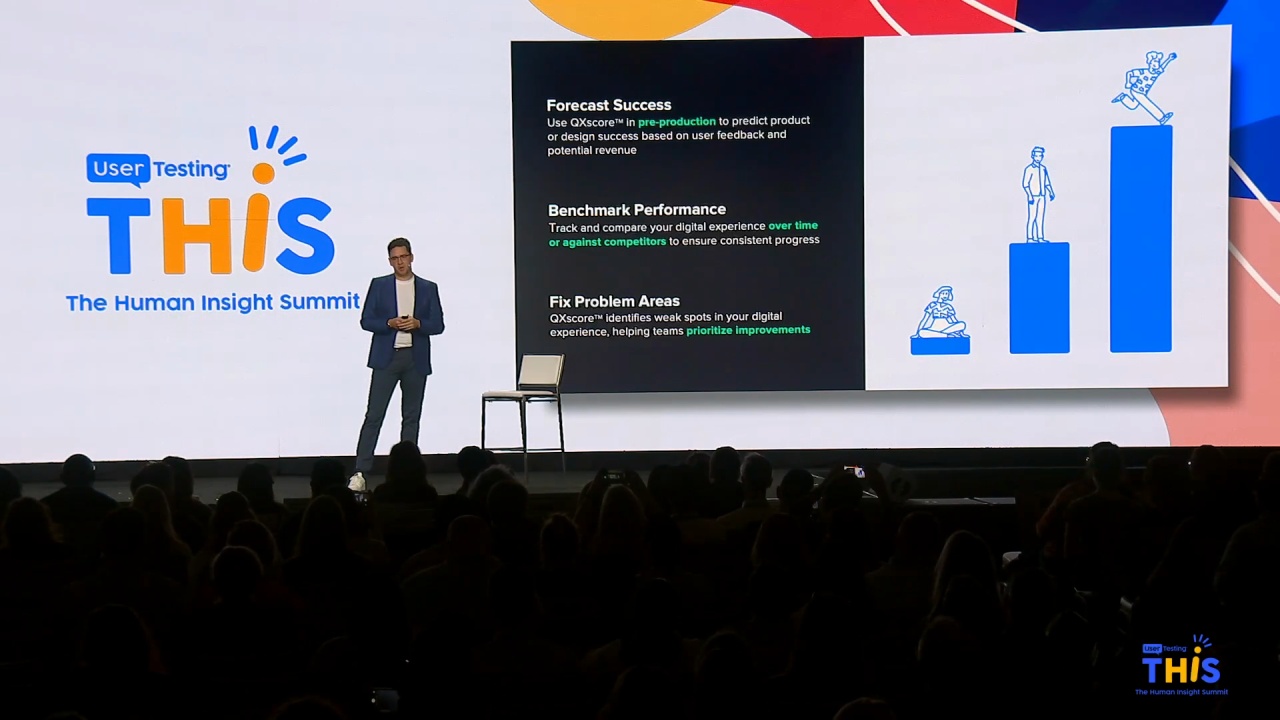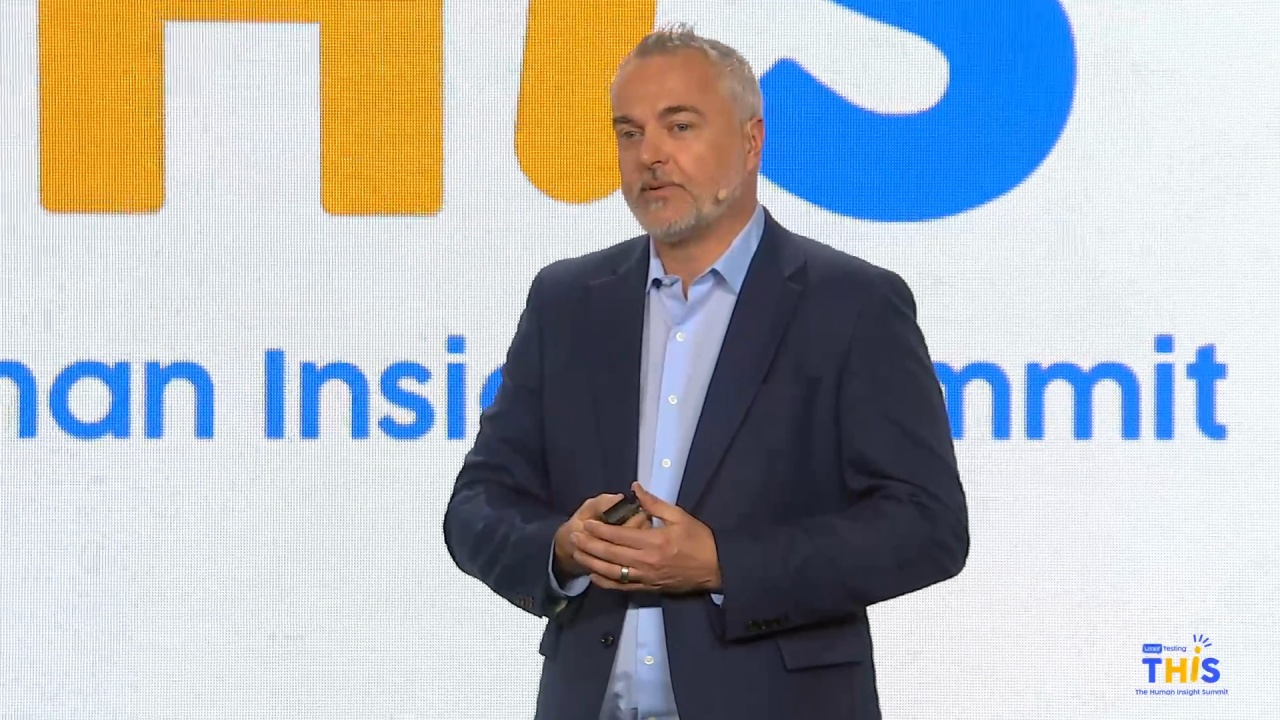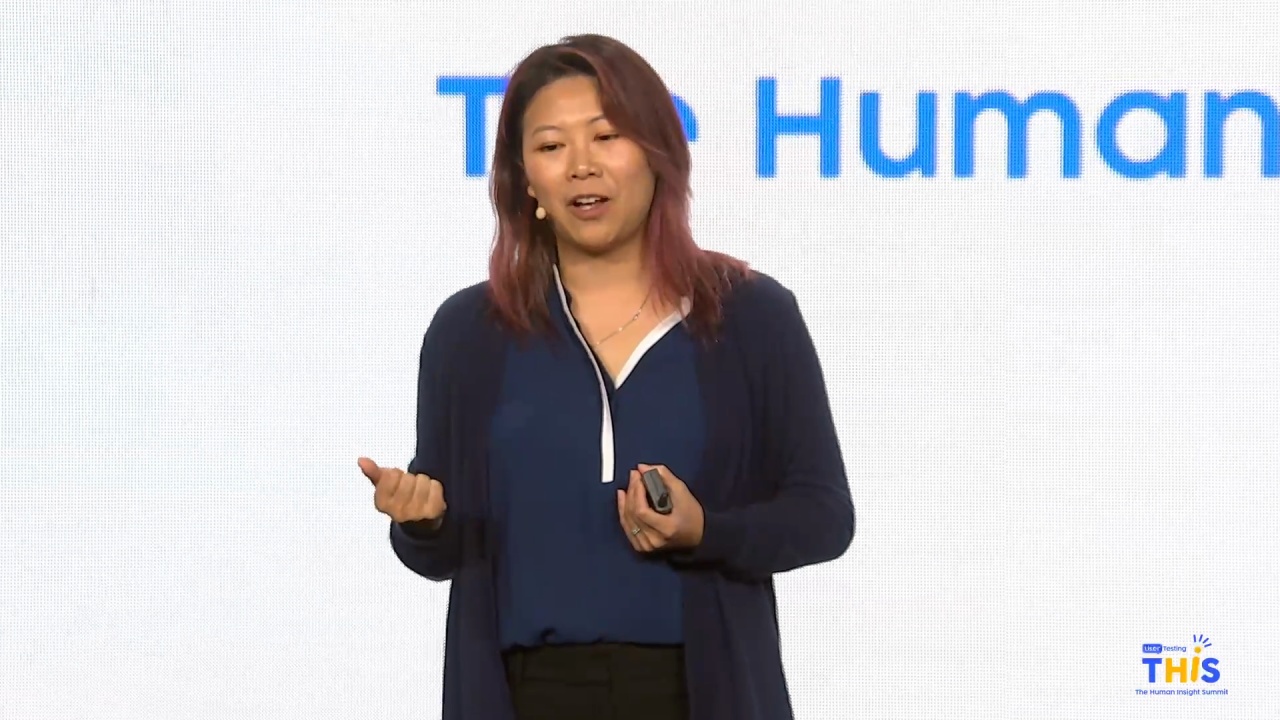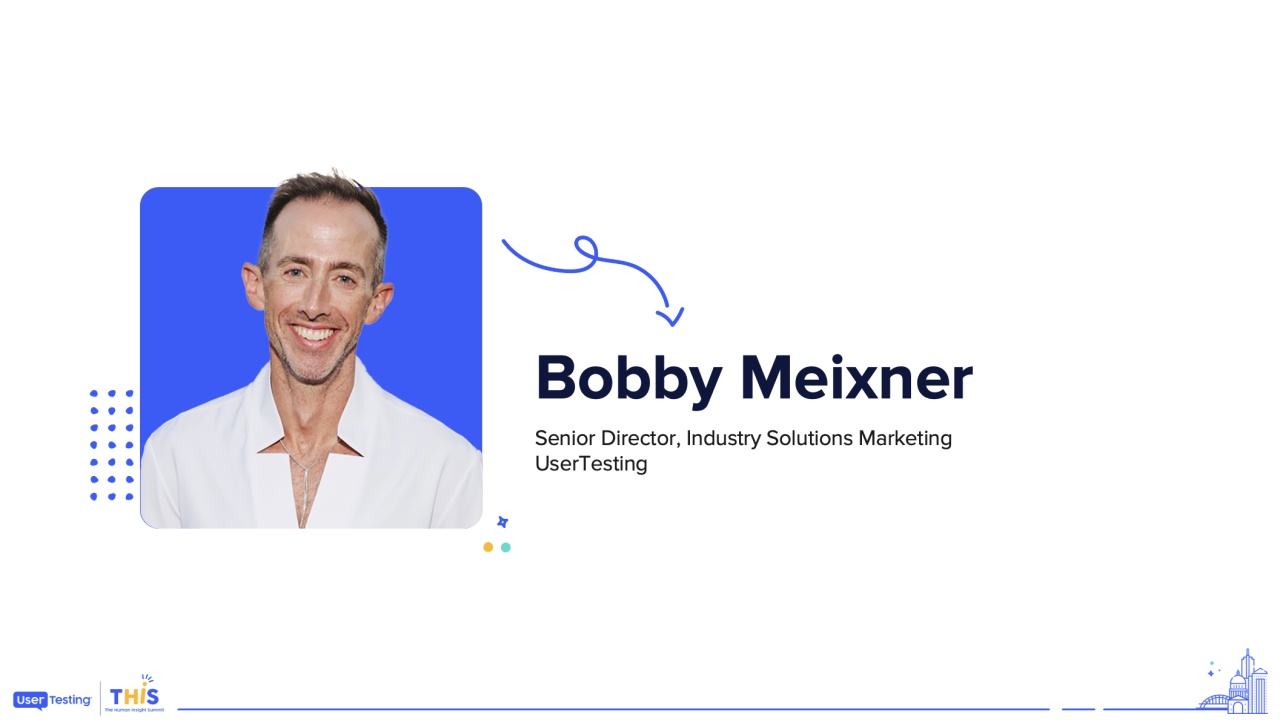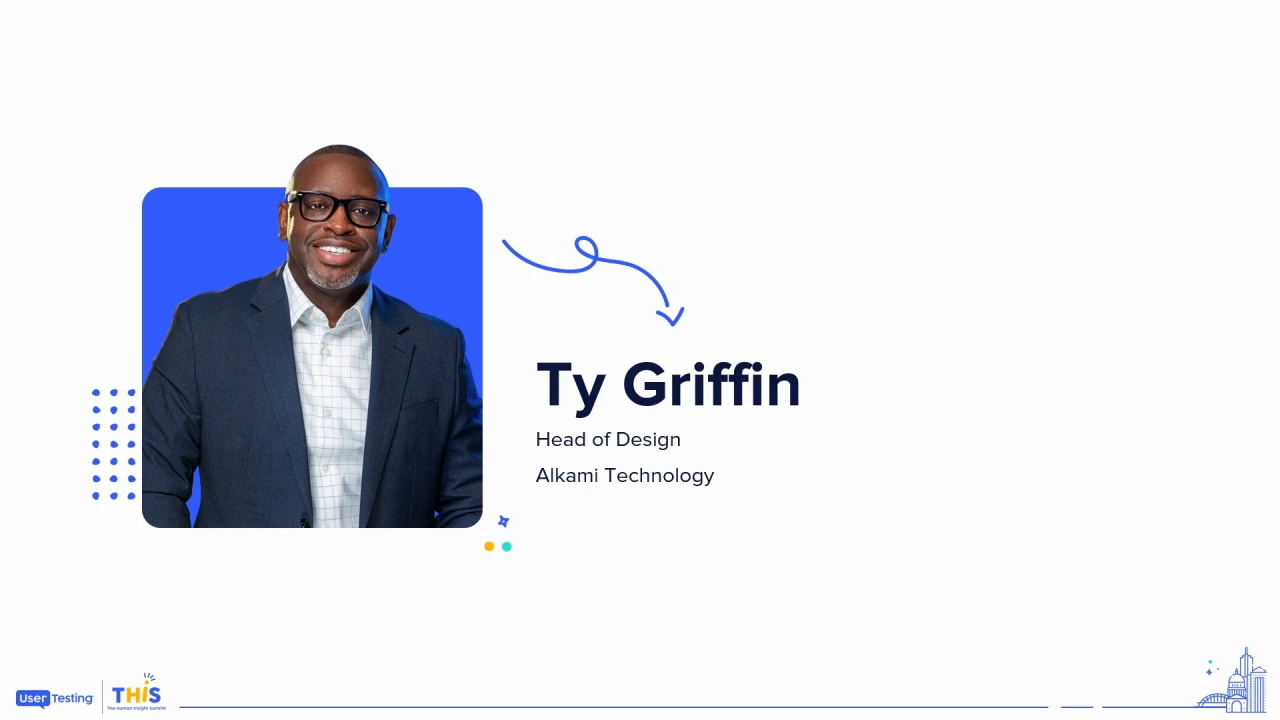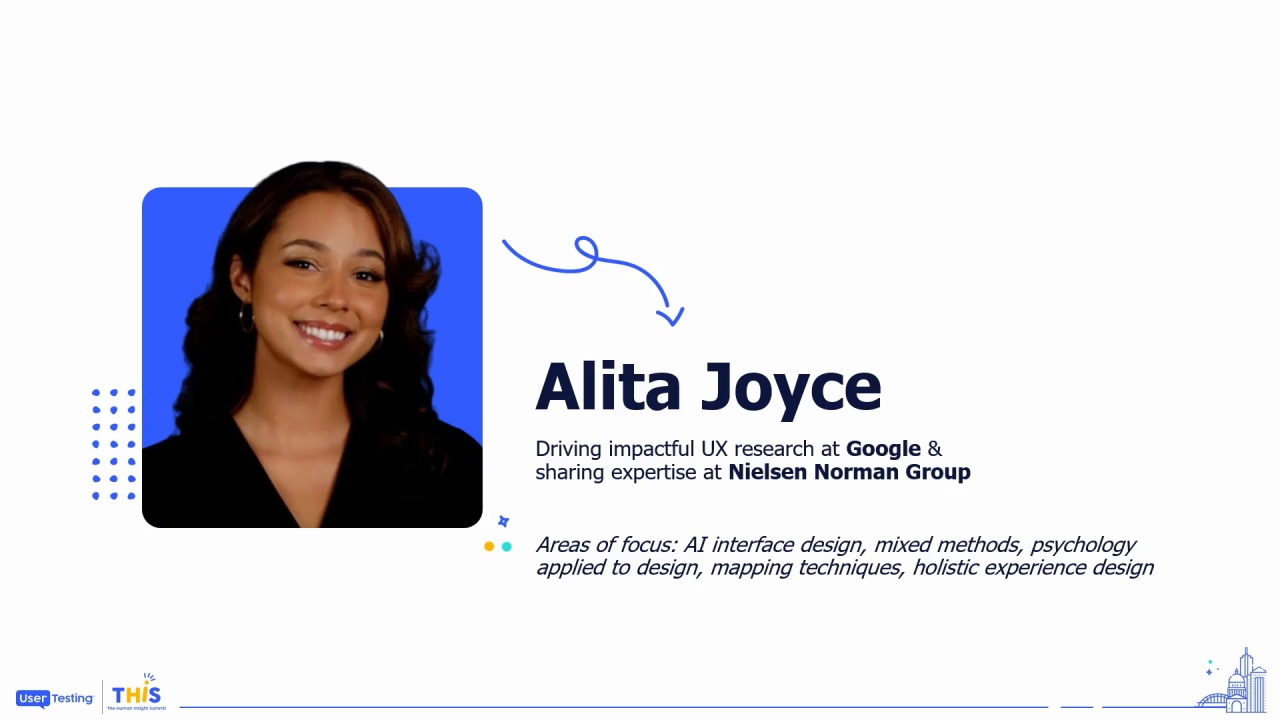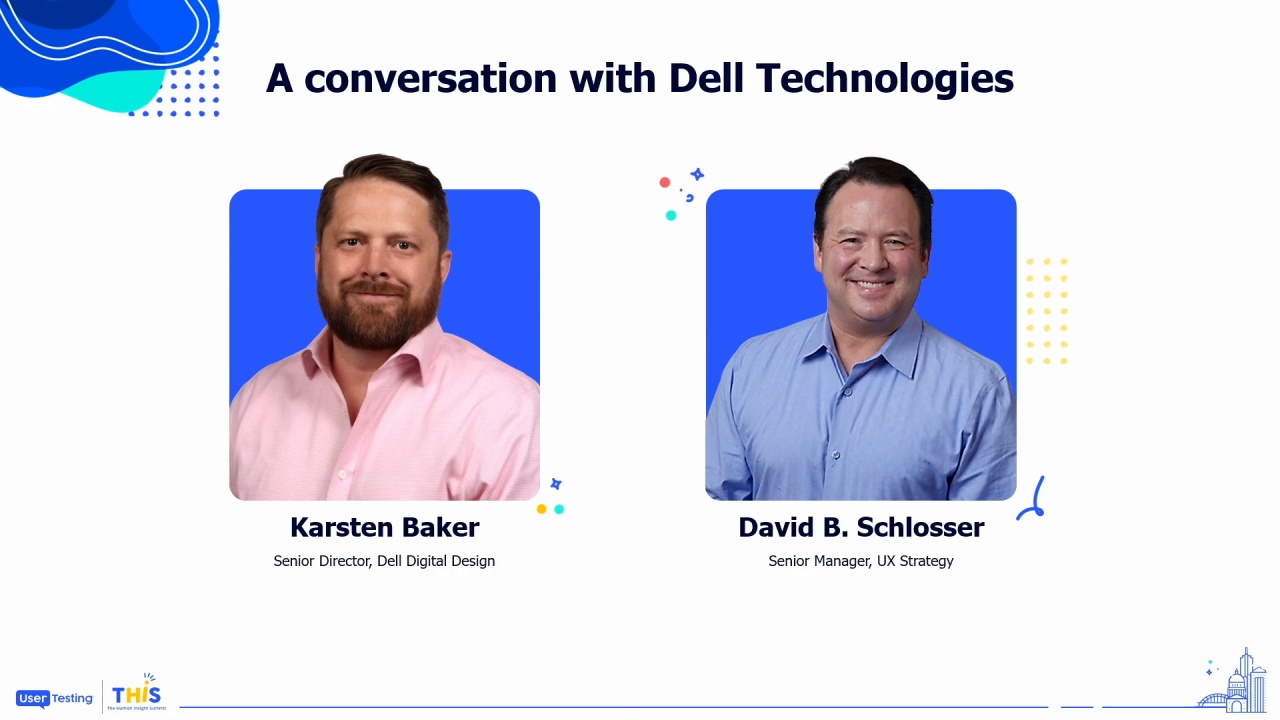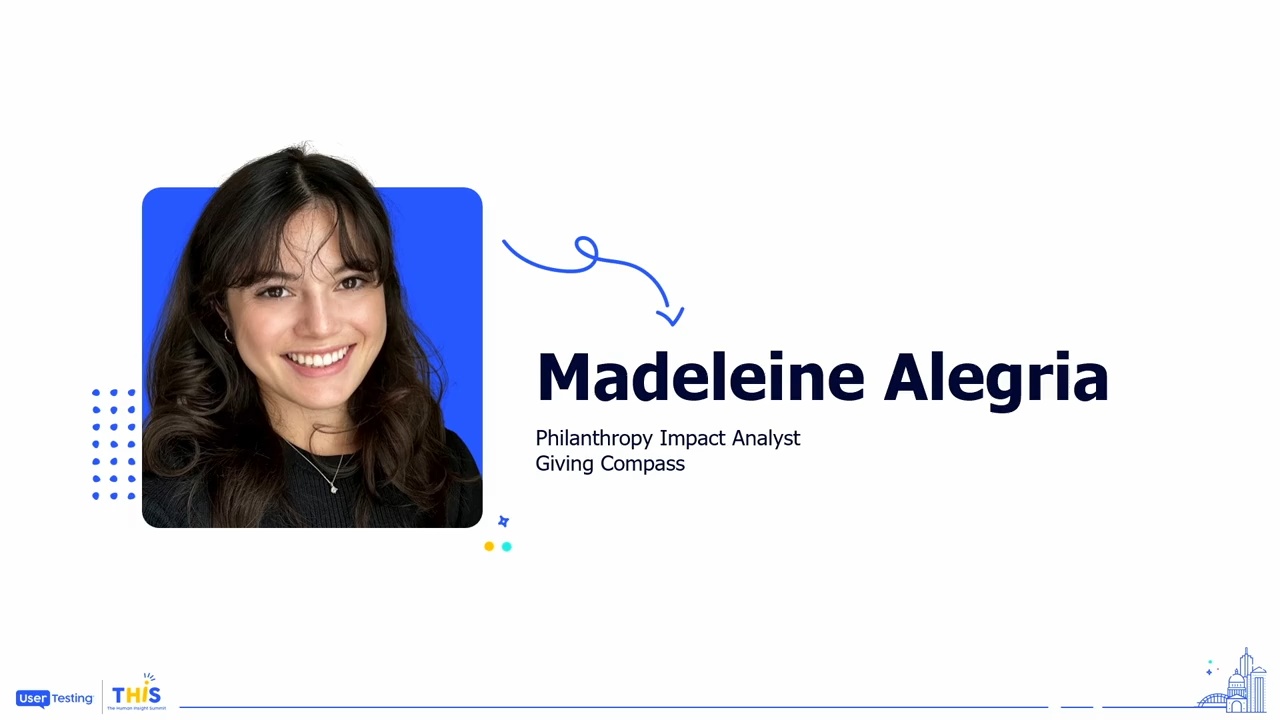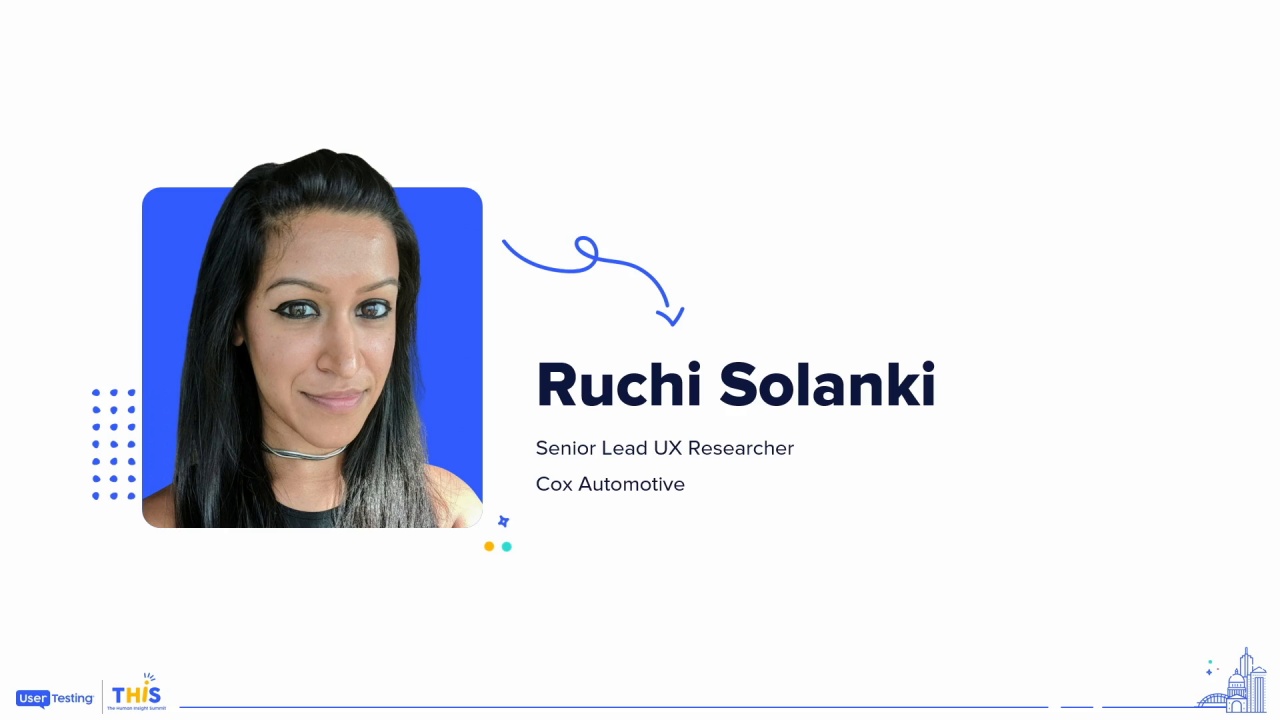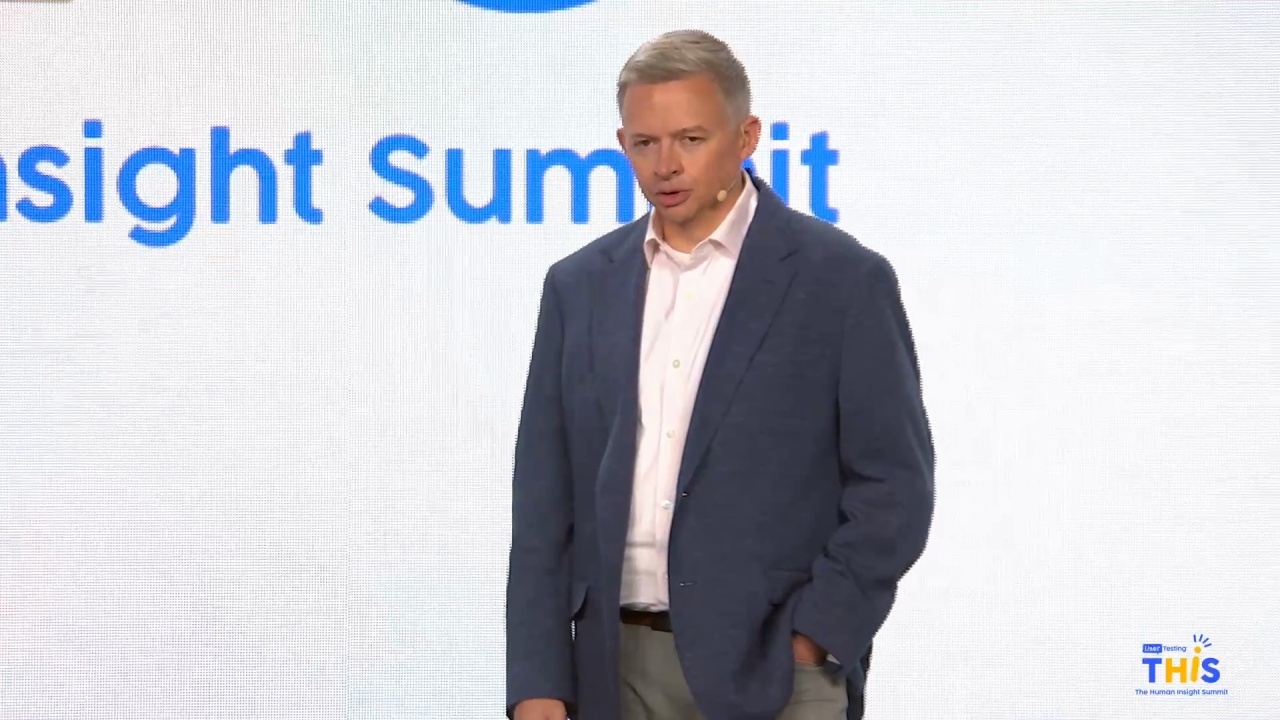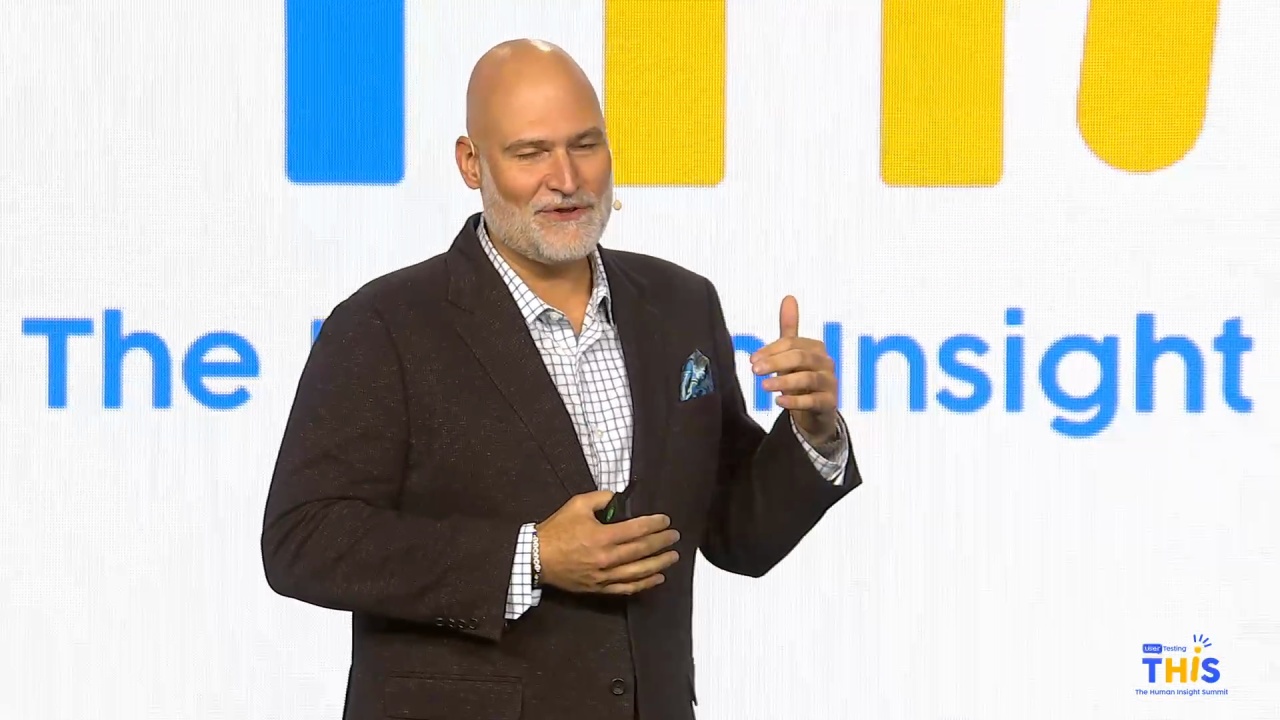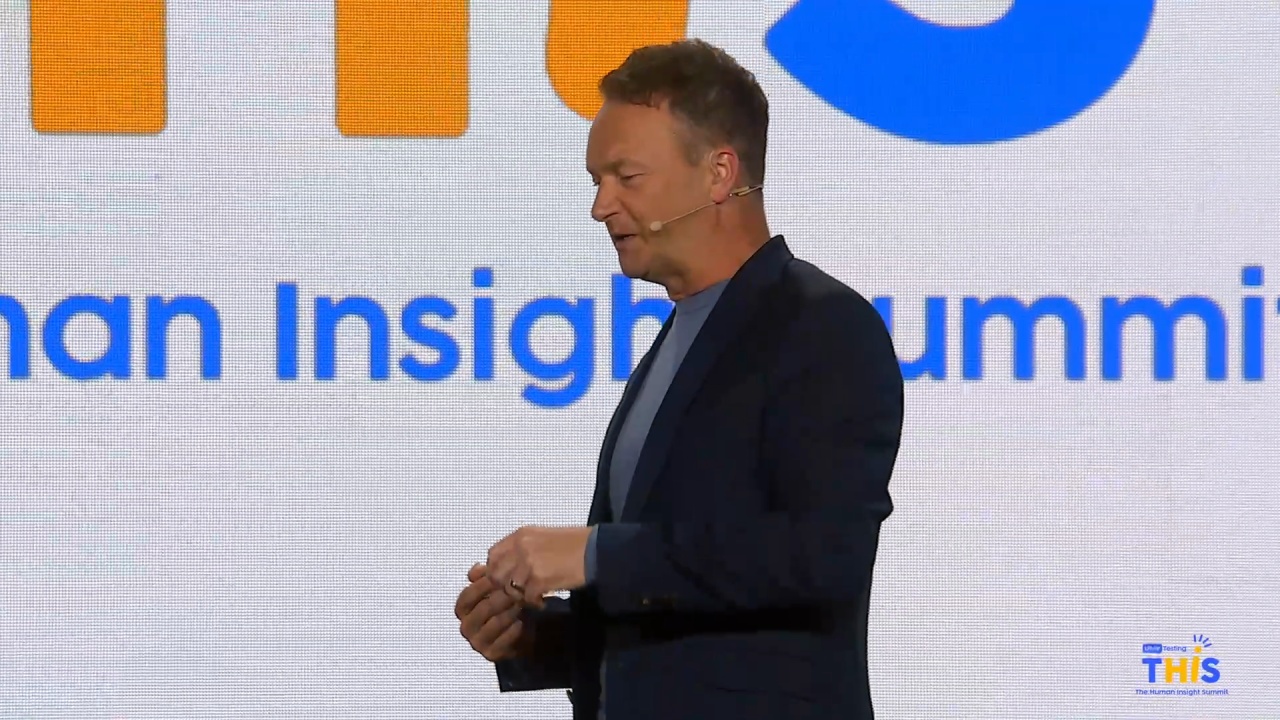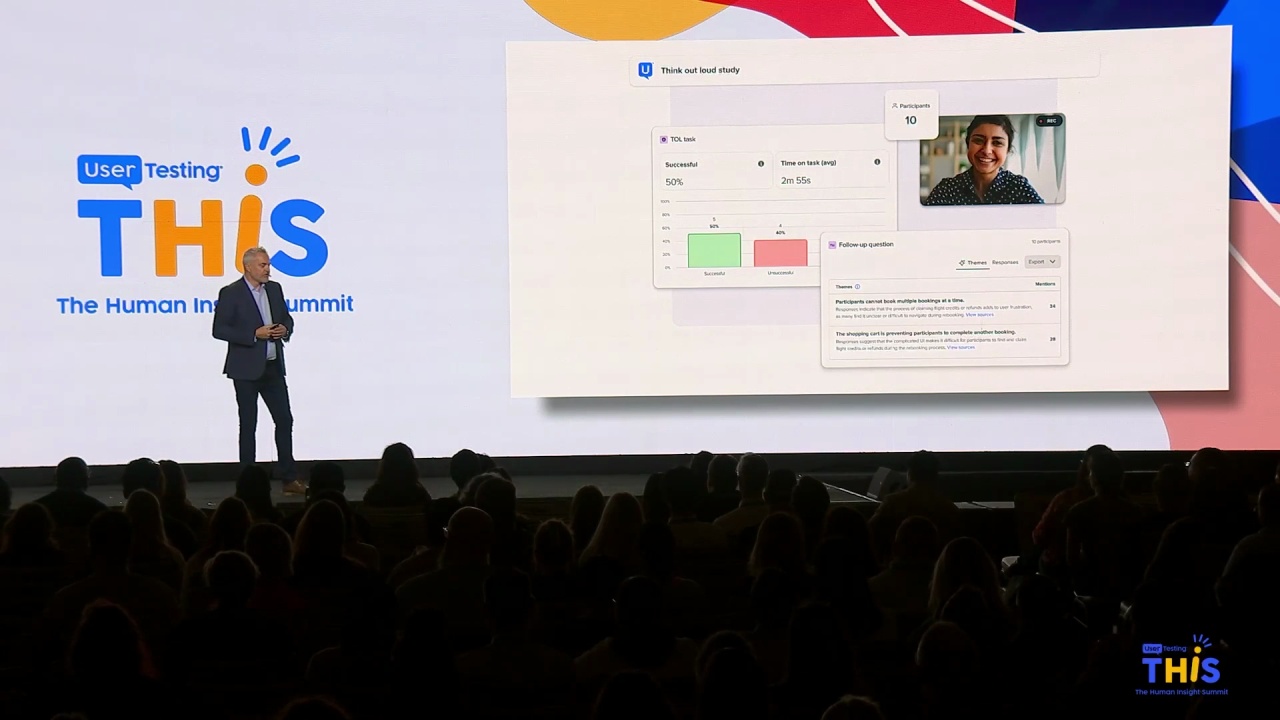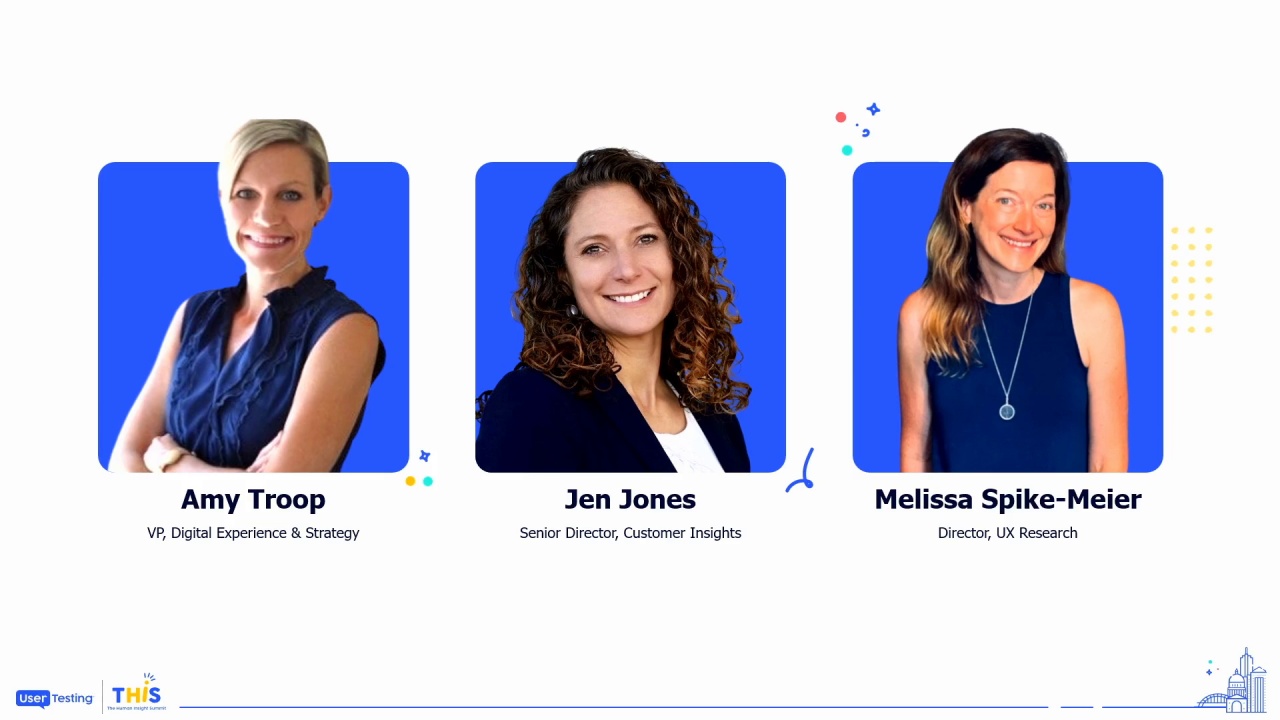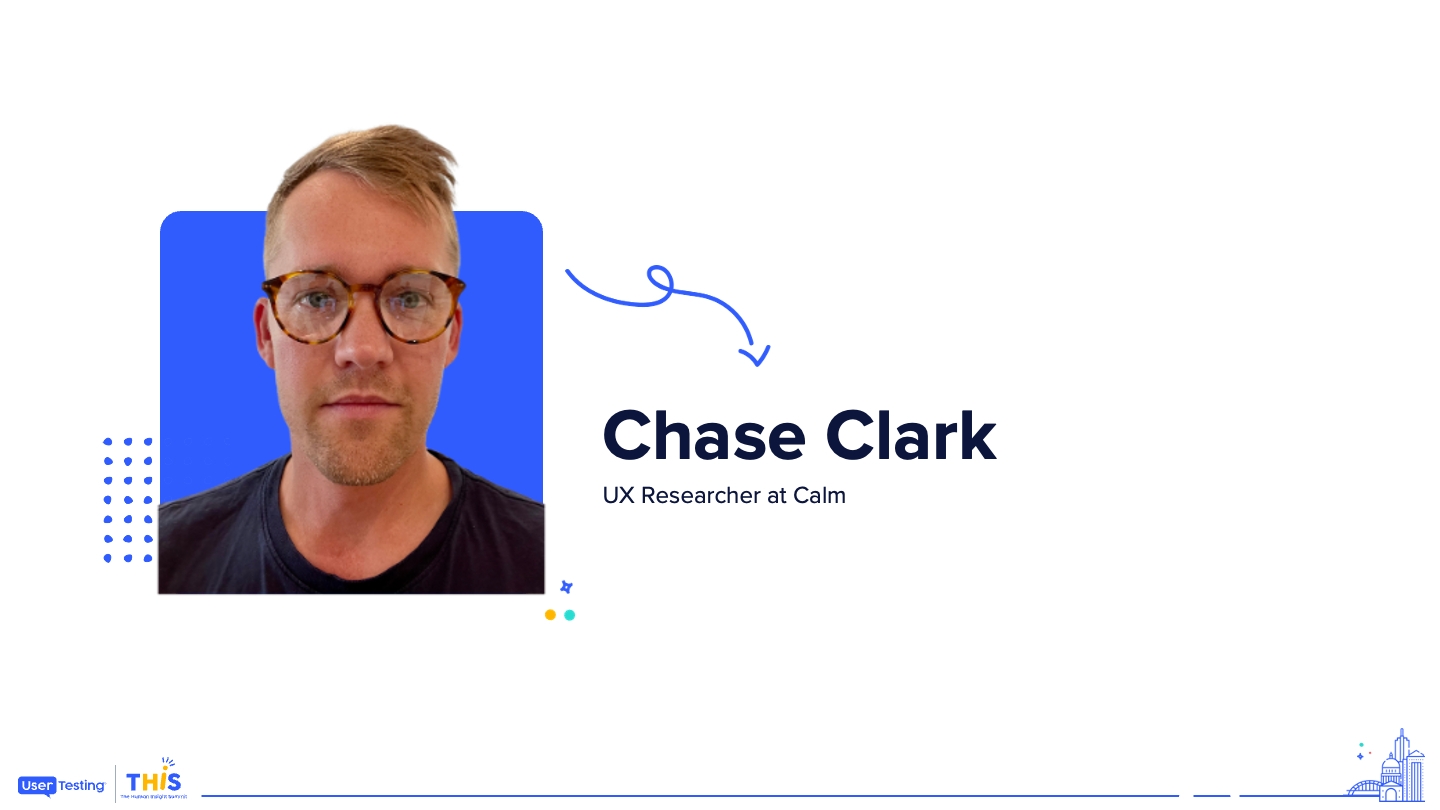
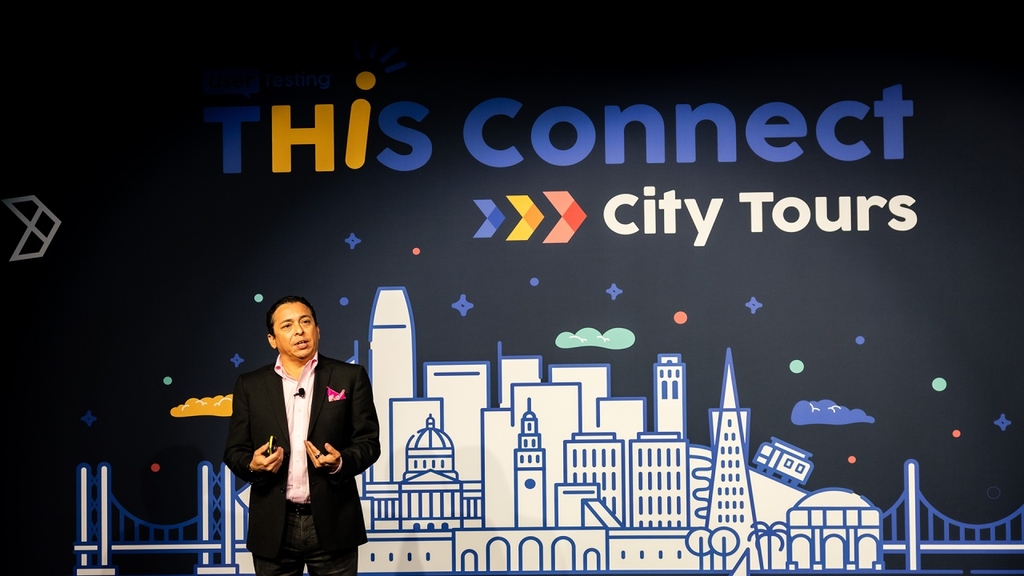
Brian Solis: AI Business Transformation: Innovation Starts with Experience Design
Brian Solis
Futurist, Author, Anthropologist
AI Business Transformation: Innovation Starts with Experience Design
Brian Solis is not only Head of Global Innovation at ServiceNow, he’s also one of the world’s foremost authorities on customer experience innovation. He literally wrote the book on it. In this special session, Brian will explore how AI creates exponential opportunities to drive business transformation and growth through human-centered experience design.
I am thrilled to welcome, someone who's been shaping the future of customer experience for literally decades. It's not I mean, when we say decades, I'm talking two decades. Right, Brian? I'm not talking five. Okay? It's but it is But it is decades because it's more than one.
But Brian is a futurist, a best selling author, anthropologist, and currently the head of global innovation at ServiceNow.
He's widely recognized as one of the world's leading voices on digital transformation and customer experience. I remember back in the day digital Darwinism.
It was awesome, and he's a leading voice...
I am thrilled to welcome, someone who's been shaping the future of customer experience for literally decades. It's not I mean, when we say decades, I'm talking two decades. Right, Brian? I'm not talking five. Okay? It's but it is But it is decades because it's more than one.
But Brian is a futurist, a best selling author, anthropologist, and currently the head of global innovation at ServiceNow.
He's widely recognized as one of the world's leading voices on digital transformation and customer experience. I remember back in the day digital Darwinism.
It was awesome, and he's a leading voice on all of this stuff. And, yes, he literally wrote the book on transformation and customer experience. In his closing keynote, Brian will explore how AI is creating exponential opportunities for business transformation and why human centered experience design is a key to unlocking its full potential. So please, guys, one last time, huge go crazy big welcome for Brian Solis.
There you go, buddy.
Speaking of decades, I've known him for a couple.
Well, first of all, thank you. What a privilege it is to be here. This is my, I think, fourth user testing event in my time, so I'm also a big fan of the company and the people at the company.
So as a result, though, I do have to ask you for a favor.
Please take the books. That's a gift from them to you.
Because if you don't, they have to take them.
And so that's probably the last thing that they need to do at the end of this.
So my name is Brian Solis.
I am following my colleague, whom I'm a big fan of, Amy Lokey.
Her stature in the company, her rapid rise to the chief experience officer role at the company is testament to how important experience is.
This is a conversation about how we change the narrative around experience design and experience innovation.
It's how we change the narrative around the role you play within your organization and the importance of the work that you do in defining the experience that not just users, but people that human beings have with your products, with your services, and the experiences that they have as a result.
And nothing says experience innovation like PowerPoint slides.
And so you're very welcome.
This is an artist. I'm a big fan of his, partly because I'm a Spaniard and he is a Spanish artist.
But if you think about where we are right now, just look at anyone walking down the sidewalk and the number of people who will be glued to their cell phones as they're walking.
And ironically, here we are training AI on all of the creative work that human beings have done in the past, and it's almost like an intentional role reversal.
And so when we look at the role AI plays in the work that we do, we do not want to give it anything that is valuable and unique to us in who we are as individuals.
We want it to be exponential in how we as individuals shine through our work, how we shine in the products and services that we create for people to experience.
And I'd like for you to leave today thinking about AI not as generative, not as automated, but instead as augmented.
And it's an individual choice you make in the relationship that you define with artificial intelligence. How will you use it to augment your uniqueness?
How will you use it to augment your potential, your capacity?
Because the thing about artificial intelligence is that for the most part, and I spend pretty much all day every day studying this stuff, is that people are using artificial intelligence to do what they did yesterday better, faster, cheaper tomorrow.
Going back to the industrial revolution is pretty much how we've used every technology.
The innovators will use AI to do what they couldn't do yesterday, tomorrow, or to discover what they didn't know they could do.
And that is the opportunity for each of us. So as we change the narrative, let's take a step back.
We are not our customers.
My colleague Simon shared with me, I missed it earlier today, about the experience gap between executives and regular people, where eighty seven percent said that they deliver great experiences and eleven percent agreed with that.
And that's the dilemma that we all face is that we're not our customers, yet we pretend or we act like we are.
Yet it is the customer. It is the user. It is the employee. It is whomever is on the other side of the experiences that you create that matters most.
And it's how they define that experience that also matters most. Your brand, your company's brand is defined by the experiences that people have and share.
For example, when Yelp first came out, I don't know if you remember this, but the first reaction that business owners had was basically a cease and desist.
How dare customers share their experience?
Rather than saying, oh, well, that's not good.
Maybe we have something to fix.
Maybe we have something to improve.
Maybe, just maybe, if we cared and we thought about experience at the center of the work that we do, perhaps our work would be reflected in the experiences shared back with us.
Oh, that's novel.
So this is where the work in what you do becomes instrumental in the work that you will do tomorrow.
I wrote a book a couple of books ago called x, the experience when business meets design.
And as I was writing the book, I looked to find a word or a a sentence that would define the word experience so that we could kind of all agree this is what experience means, and let's move on.
It was so interesting looking at all the expert books, all the expert talks, all the expert articles, all the expert research reports. I really couldn't find a definition of the word experience that resonated.
It was such a technical term.
It was used in CX. It was used in UX. It was talked about in measures. It almost spoke about itself in the way that eighty seven percent of executives feel like they deliver a good experience. It's just, like, not human.
So I decided to just kinda get to the root of what an experience is.
If you think about one of the best experiences you've ever had in your life, something that you still remember today, something when you close your eyes and you think about that experience, it makes you smile.
We all have those experiences that we can recall.
And if you think about the thing that we all share in that moment when we close our eyes and reflect on that incredible experience, it is a memory.
It's a memory that you feel, and it is a memory that's visceral.
That's what an experience is. So when people on Yelp share what it is that they love, it is because it is a feeling.
And there are only two types of experiences that people remember, experiences that are wonderful and experiences that suck.
And everything in between is forgettable.
And yet that is what we design for, to be forgettable.
Because I sure don't want to believe that we're out there trying to design to suck, yet a lot of us end up getting put in that bucket.
And so we have to design with intentionality to help people remember the experiences that they have with us.
This is why, for example, in the software world or the web world or the app world, why people struggle with adoption.
If it is a chore, if you have a visceral reaction before you start using something, if you dread having to use something, that's a problem.
But I want to ratchet this up because it's not just about some function within the org of where you sit. The experiences that you deliver actually are more important than I think we even give them credit for.
So let's take a step back. Now we know what an experience is. Let's go all the way back to what a brand is.
Historically, marketing has been a top down inside out function. We tell you what our brand is, we show you what our brand is, and if we do it enough, we make an imprint.
So if you think about some of the top brands you probably have a visceral reaction to them But there's a layer that we don't talk enough about Brand experience.
If you bought a new car, if you bought a new pair of shoes, part of it is buying it. That's the brand experience. Part of it is unpackaging it or opening the door or putting it on for the first time. All of these things are brand experience.
It's how you feel as you're using it. It's how you feel as you're buying it.
And these are things that should be designed. I used to work with Tony Hsieh at Zappos, and in the early days, one of the things that he realized that affected his brand experience, if you think about it, customer happiness, was it started not just with the website, but it also continued when the box arrived at your house or your office.
And if he didn't control that, he couldn't control the experience.
So he got rid of drop shipping and decided that they would not discount because they found that if you had a great experience, if you felt it, you would buy again and again and again, and the price didn't matter. In fact, so much so that that research has gone on I've actually done research as well that shows if you know that you're gonna have a great experience, you will pay twenty five percent more for the same thing.
So now then take brand experience, and let's talk about what customer experience is or what CX is.
It is the sum of all engagements that someone has with you during the journey. That could be the app, that could be the website, could be the product itself, could be customer service. Right? I think every one of us wakes up each morning and says, boy, I hope I get to call customer service today.
That's just how wonderful it is.
And if you think about any any site, any app, it's pretty much the same as it's been since the nineteen nineties.
You think about TikTok, for example.
TikTok reimagined what it was like to use an app that was platform specific, that was native to the device that you have you had. But when the web first moved to mobile, when the iPhone came out at that scale, rather than reimagining that experience, we just had adaptive or responsive design techniques.
We didn't reimagine much.
So I ask you to do what I do in my work, which is put an apostrophe s at the end of customer experience, the end of brand experience so that it's the customer's experience.
That eleven percent versus eighty percent did not have the apostrophe s. If you're designing for the customer, if you're designing for the user based on how they wanna react, how they want to use, what they cherish, how they value experiences, then you're designing with an approach that's called HCD or human centered design.
The same is true for user experience. All of these things aren't individual disciplines as much as they are part of a cohesive brand that we want people to feel as they interact with us at every stage of their journey.
Start with that apostrophe s.
And as you do, you realize that there is unity at every stage.
And the only way to do that is to, number one, tell this story internally, but the importance of this story is transformative at the business level.
So for example, with AI, we might want to use it to get insights faster. As we heard on the customer panel, time is not a luxury.
We have so many things to do. We have to move fast, go to market.
We have to get market share. We have to drive sales quarter to quarter. We have a different way of thinking about things.
But in reality, artificial intelligence cannot build intuition.
It cannot build understanding, and it cannot build empathy. And empathy is the critical differentiator in how you design the experiences that people will feel because it puts you in their chair. It puts you on their device.
It puts you in their hands, and it puts you in their heart and in their minds as memories that people recall.
You have to know your customer.
You have to want to know your customer.
You watch the videos. You feel their pain. You feel their frustration. You listen to their complaints, and you embrace these things because you care.
And because once you care, you can start to design the things that matter to them.
You're not just looking in the rear view mirror based on behaviors or trends. You're now starting to anticipate their needs because you are them.
I'll give you an example. When I wrote the book x, part of it was what was on the page.
The other part was designing it for the experience I wanted the reader to have. And I'd done all of this research as a digital anthropologist at the time around user experience with mobile devices. The iPhone was huge. It was transforming everything.
And so I wondered, well, how do mobile devices change our brains?
Swiping.
We're moving faster.
All of those things.
And as a result, realize, actually, if I were a high school student and I was given a textbook and all I did was spend day in and day out on my mobile device, could I actually pick up a textbook and read it?
No.
Because I train my brain to be much faster, to be more dynamic. Instead of reading left to right in the z formation linearly, I can pop in and out of things. And so I decided to design the book as a mobile app.
It had a wireframe.
We actually found that we didn't need a table of contents. We designed the book to jump in and out of any part of the section. Everything was color coded.
And it was an interesting experiment with the hypothesis is that if I had to design the textbook for a high school student today, what could it look like if it still had to be on paper?
And it was a different approach driven by the empathy that I felt for someone who probably feels an incredible amount of frustration when they're asked to read chapters seven to twelve by tomorrow.
Because when you can see things differently, you literally feel it, and you feel this burning desire to do something better.
For example, this is a bottle of ketchup. It was invented in eighteen ninety.
For the most part, it sucks as a delivery vessel, and yet we still live with it today.
In fact, most of us have strategies for how we get the ketchup out of this thing, whether it's a knife or the palm of your hand. I know you're actually thinking about that right now, or it's just force, or gravity and a gentle squeeze.
But here's the thing.
Innovation never stops for those who feel empathy, for those who are constantly looking at their customer, their user, and wanting to deliver a better experience.
How many of you knew this?
So that is very true, actually. Come here. I wrote a paper on ketchup bottle development when I was in college. Right.
The original glass ketchup bottle was made in eighteen ninety, but then they made a squeezable ketchup bottle in nineteen eighty three. But it was still difficult to get ketchup out of the bottle. So they made what's called an upside down container or a gravity container, which was in two thousand and one, and that's the one that you see right there. So I'm gonna show you guys why that works.
Now if you were to squeeze a gravity bottle from the front like this, you have to physically squeeze for it to come out. But if you were to squeeze the bottle from the sides and then release, all the pressure is gonna push out the ketchup on its own. Just take a look. I squeeze the sides.
It just releases like that. Super easy.
So I know what you're gonna do when you get home.
Don't try it at the market. Buy it first. It's a helpful tip. Also, it's a good party favor.
Everything can be reimagined and should be reimagined because we have visceral experiences to the designs that actually suck.
For example, this is eighty seven percent versus eleven percent in real life.
Whomever designed this didn't think about the situation in which you would need to know the information on those sides.
This is New York. So let's say you're stopping traffic in your car while you're reading this.
Your life will be physically threatened.
So they thought, alright. Well, this is obviously bad. Let's let's do something. Let's have a contest, and let's get some design in play. Let's let's make that sign better. But this is actually not what it looks like, but this is really this actually exists in Culver City, California.
You know, this is actually close to home. So my father used to work for the traffic of engineering traffic engineering for the Culver Culver City, and his boss came up with this idea, and he didn't wanna challenge it. And it's like, dad, you're ruining the name.
Gotta get out there and innovate.
But he won. They got this thing taken down, not because of his opinion, but but because it was all over the news about how bad it actually was.
So this is what New York came up with.
And it's cleaner. I'll give it that.
But it's not innovative, and it's not empathetic.
If anything, this could be something that AI could have spat out.
Because in the same way that I had to reimagine a book for a TikTok brain, you could reimagine the sign for a digital brain to be much more engaging, much more intuitive, much more effective, and also much more experiential. Guess what guess the first thing you would do after you parked at this place? You tell everybody about the sign and how amazing and wonder oh, I wish they were all like this. You know what else I wish was like this? Instructions for how to use a product.
Instead, we go to YouTube or Instagram to figure out how to use it because we just can't read.
So if you're waiting for someone to tell you what to do, you're on the wrong side of innovation.
This is the moment we change the narrative, not just for ourselves and our roles and our teams, but also for the companies that we represent and the experiences that we deliver to the people who matter most to our companies.
We start with human beings. We start with people and the empathy that connects us to them.
This is a brilliant quote that I wanted to share with you, that we spend a lot of time designing the bridge, but not enough time thinking about the people who are crossing it. That has to change.
We have to feel what it's like to engage with our company, our product, our services, our apps, our sites, our software.
Because in reality, besides the emotional engagement, the reality is is that how people interact with you, it's a reflection of their user behaviors and their user standards.
When you use TikTok, whether you realize this or not, you are speeding up the pace of your brain.
There's a whole another conversation we can have about whether that's good or bad for you, but it is a reality.
And as it speeds up, other things in life start to speed up, like you listen to podcasts at one point five x or you watch videos at one point five x. I have friends who watch this stuff at two x. Like, I don't wanna listen to Alvin and the Chipmunks because that's what it sounds like.
I wrote this piece that explored all of the creative and societal effects of life these days, devices, AI, two to three years of COVID depending on where you lived in the world. And all of these things are coming together.
The attention economy, what's called the introvert economy, and also the AI economy. Part of this is how you feel. Part of this is how your brain works. Part of this is around how your device relationships affect how you engage. And what it has created is a society of what I call accidental or digital narcissists.
We didn't set out to become narcissists. It's just that every device and app that we use tells us we're the most important person in the world.
Just ask any influencer.
And every revolution has changed behavior. Actually, I would say that true innovation changes behavior.
But we haven't really changed experiences along the way to align with those behaviors.
For example, in two thousand seventeen, there was a series of studies that started to look around how the iPhone was changing behaviors.
This one, the lower bars, the red bars at the bottom are essentially cell phone usage. As you can see, it hasn't changed much since the iPhone came out. The other burgundy bars represents data.
Not a surprise.
We use data more than we use the phone as a phone. In fact, I don't even know why we call them phones anymore.
That's a behavior shift.
This is it's an example of correlation.
It actually was a study done.
But since the iPhone came out, US gum sales have plummeted.
And the working hypothesis, whether it's true or not, was that people just stopped caring about gum as they were checking out at the supermarket because they were glued to their phones.
So whether it's true or not, it is a behavior change. This is why I don't know if you remember. A few years ago, you saw commercials all over television. For those who still watch television.
There's this thing for everyone else called commercials and in I'm just kidding.
Where they showed people who weren't chewing gum and people who were chewing gum, and they asked you which person is cooler.
We don't see those anymore.
We talked about this. We talked about that, but this is something we haven't talked about, which is TikTok users are moving so fast that they want artists to release faster versions of their songs.
Yes. This is the world in which we live, and so I want you to think about that brain when you're designing.
Because when eighty seven percent of executives say that we deliver good experiences, they have no idea what good means.
They don't understand that good is directly tied to the word relevant, and relevant is rooted in empathy.
For example, back in the day, I used to do work with Uber and Travis Kalanick, and we used to talk about the secret competitor.
Wasn't Lyft.
It was how long is too long to wait for an Uber before you open the Lyft app?
Because we were becoming increasingly impatient.
There's a reason why, for example, if you use DoorDash, one day you probably noticed that when you ordered your food your food, you saw the driver on the map coming to you.
And that was because if for any reason your food was late, the first thing that the user did was contact DoorDash customer service and demand a credit or a refund.
And even if the food was late, that plummeted because they could see that the car was at least on their way.
When we think about the user, we are not our customer because we are not thinking like an impatient accidental narcissist who is operating much faster than we are.
Because we're designing in the confines of what we we think good is based on the processes that lead up to good. All of this is open to reinterpretation.
For example, if you live in Dallas, perhaps you have ordered something from Walmart where you get it is how drones are by a drone.
This is a wing delivery drone. It's eleven pounds and can deliver packages within a six mile radius of its home base. In this case, Walmart and the Dallas area. You may not have this in your area just yet, but for people living in the Dallas area or in Christiansburg, Virginia, it is totally normal to see a drone deliver a package in your neighborhood.
Here's how it works. The drones sit here on their charging pads in their nest waiting for an order. Once someone places an order in the wing delivery app, the order is packed in this tote. The drone will take off from its pad and let down this yellow clip, which an employee will use to attach the tote.
This was incredibly fun to do, by the way. I had to go through training to do this. And finally, the drone will deliver the package within thirty minutes or less from the time of ordering. So you might think, wow, an invention for incredibly lazy people.
Yeah. Maybe.
Not maybe.
And you'll also notice the speed of which that video was played. Completely normal. Right? Of course. Because we have we're on a time schedule here. I I gotta tell you that I was gonna make beignets for my twelve year old. She'd been craving them ever since we went to Disneyland, and I didn't have flour that I needed.
If I had this, I guarantee you a drone would be at my house in an hour with flour because we didn't do them because I didn't wanna go to the store.
The thing about this, which is interesting, is that if it is a minute late, the second time you order it, you're gonna complain.
But at first, it's like, you said a drone deliver flour to my house. Second time, well, it took sixty five minutes. I'm gonna complain. I would like a credit. It's just the nature of consumerism. It's the nature of being a user.
But now I want you to think about the reality of not just usability, but just what it means to be human.
People feel stressed. They feel anxious. They feel confused. Let's we'll keep politics outside of this. Just in reality, the world has changed.
Things are moving faster.
They're not sure how to even define the word success anymore or happiness.
They're rethinking life milestones. They're rethinking marriage. They're rethinking university. Everybody's rethinking everything. They're not planning out as far as they used to. They're staying home more than they're going out.
In fact, in New York, what used to be the most coveted table reservation at nine PM, it shifted to five PM.
And restaurateurs was, what's going on? That's part of the introvert economy.
People aren't planning for the weekends that they used to like the way they used to. Dance clubs, late night clubs, those are also going out of not just style, but out of business.
Eight hundred have closed in London in the last two years.
Just look at Las Vegas. They're all over TikTok right now in terms of these videos around clubs that are closing.
It's because people just don't know what life is all about right now. And so when they feel something great, it stands out. It shines. I call that an ignite moment. I think, Amy, you could appreciate we used to I used to do work with Google, and back in the day, we used to talk about micro moments all the time. And the micro moment was the moment when you had to look something up, when you search something, it was seventy percent of people started that search on their mobile device, and they realized that on the other side of search was a website that wasn't optimized for a mobile device, so it became this whole thing.
And that's where we are in life all over again.
Technology is happening to people. They don't feel like they're in control.
Their addiction is a thing, but again, we can talk about that later. And so when people don't feel in control, you have to design for that. You have to design for how you make people feel special and engaged.
If you look at, for example, what therapists are hearing from their patients all the time, it's how online dating is ruining their life.
These are the top six things that people complain about. What does this have to do with design? Everything.
People are not happy.
And when they're not happy, they take it out on you if that experience isn't good. So for example, when people googled on a mobile device any search term, and they got a mobile website that sucked, that brand was out of the memory already. You know who took the blame for that? Google.
So this is why they had to invent the concept of micro moments so that we could design for that mobile first experience.
So let me ask you something. Do you have written down anywhere in your organization how someone should feel and what they should feel and what they should share as a result of using anything that you have touched?
Because if you do, thank you.
Because that is how you get to the beginning of a great experience when it's defined. And when it's defined, it can become measurable.
Because we tend to put a lot of things on time and productivity and outcomes, whether we can flip someone, whether we keep someone in a cart, whatever it is that you're designing for, conversions.
But we don't design for the experiences we want people to have and share, Nor have we broken it down in the customer journey of what people feel in each of their moments of truth.
We have customer journeys, but we don't always have moments of truth.
There's this quote that I live by, which is we don't remember days, we remember moments. And so we design for moments. And when I came up with this concept called ignite moments, it was based on the work that I had done with Google back in the day when we come up with micro moments.
Moments. It was realizing what is that experience you wanna ignite once you have someone's attention. For example, if anyone in this room plays vinyl, you will debate everyone in this room who doesn't, you will debate everyone in this room who doesn't about why it's a better sound and a better experience.
And actually, there's truth to it. There's more warmth in vinyl, and there's sound waves that show how much warmth there is versus a file that's highly compressed.
And so that analogy is actually what digital is missing.
We design for forgettable moments because we're designing for transactions.
We're not designing for warmth.
We need more digital warmth.
Anybody here read the five love languages?
Okay. Great. Thank you. For those who haven't, it is how someone feels the love you give or it's how someone doesn't feel the love you give.
Basically, it says that there are certain ways that people feel things, and it may or may not align with the way that you give love. So the five love languages, now have a sixth love language. I'm sure the author Gary Chapman will be excited that I've added a sixth love language, which is that digital warmth. It is the digital empathy.
It is designing for someone the way that they need to experience it, not the way that you feel good is experienced.
It's a different approach. It's a different way of studying. It's a different way of testing, and it's a different way of actually adding business value back into the organization. Because if you deliver great experiences, you know that science and studies show that you can start charging greater premiums for products and services and start innovating in the creation of new and better products and services.
Digital empathy is essentially building on the golden rule, where the golden rule is treat people how you wanna be treated.
Digital empathy, on the other hand, is treat people the way that they wanna be treated.
Changes the script.
It helps us reimagine moments of truth based on how someone is experiencing them versus how we can make someone feel special.
So we should design then for ignite moments.
Ignite moments are thoughtful.
In a world where people feel stressed and anxious and not in control of their digital experiences or life experiences, be the light. When someone stops on your side or in your app, It is the thing that they feel and the thing that they remember because you are conveying to them, I care about you.
I thought about you, and that is why you are experiencing this exact thing right now. You know who's really good about that in real life and not so much online?
Disney.
If you think about the thoughtfulness that goes into Disneyland or Disney World, like, where they pump scents in the air, where they put things in the asphalt, how they design trash cans, how you can't see rides because they designed the paint into these blue horizons or these green horizons. The level of thoughtfulness that goes into that is not the same level of thoughtfulness that goes into the website or the app, but it could.
And that's an ignite moment. It's giving that same importance that Disney gives to a park to the other forms of digital that haven't been if you think about retail, for example, digital, ecommerce still is the step brethren or stepsister to the store.
It's still not at the same level as physicality. Yet I'm telling you, in a world where people are not just digital first, they're mobile first, and now we're becoming AI first, it is more important. There are no lines. Nobody wakes up in the morning and says, oh, man. What should I do today? Should I be physical first or should I be digital first?
Your phone is probably already in your hands before you get out of bed.
We know the answer. It's all one world.
So this is that world that we're designing for. This is how you deliver wow. This is how you deliver magic. This is how you build trust and build relations.
This is a slide you're not meant to read, but if we do hand it out to you, it is a different set of questions to think about how do you design, not just for how someone uses your stuff, but before you even design.
How should you design for that person? Who are they? What matters to them? Look. I know a lot of a lot of companies.
I have friends who have started companies that are all about using AI to deliver synthetic personas. It's actually very cool. But you know what the first thing you lose in that is? Empathy and digital warmth in the sixth love language.
So we have to design for the experiences we wanna deliver and the experiences that we wanna measure.
You can call it what you want. Some people call it return on experience, but we add the math to it. It is the ROI for experience design and experience innovation. It is the narrative for your business case, not just your use case. Because we all know return on investment, ROI, but what we don't know is when we are not doing these things, the I changes its meaning. It's return on ignorance.
What's the cost of not doing these things?
You're pissing off users. You're not building relationships. You're not generating advocacy or loyalty. You're not generating that twenty five percent premium.
This is why there are certain movements that we're seeing now, especially here in Silicon Valley, where growth design is becoming a huge thing. Can you design for the outcomes that you want in ways that deliver the experiences that are more meaningful, that are driven towards context, intent, personalization, all of the things that people care about?
Because they're realizing that in growth design and in certain circles within growth design, that if they can deliver a better experience, they're gonna deliver a better outcome. Just like that saying, happy employees, happy customers. It's the same philosophy. If people feel good, they stick around.
So we have to change the narrative.
We have to make the business case.
We have to make the case for the customer by speaking the language of the customer and translating it to the language of the c suite. And then communicating the role that you play in this, not as a designer, not as a UX specialist or a UI specialist, not as a marketer, but as a venture capitalist or an investment banker. That if we do these things, these are the things that come back, that we essentially create business value and economics of UX and CX, and how those investments don't just save money or save time or increase productivity, but that they drive business acceleration and growth. So I'll leave you with this.
I apologize that we're not going to have time for questions, but you do get a free book.
This is Maya Angelou. I was a big fan of her work, and she had a a wonderful saying. And I take this to heart anytime that I have to think about design or I have to think about experience.
People will forget what you said. People will forget what you did, but people will never forget how you made them feel.
Thank you.
